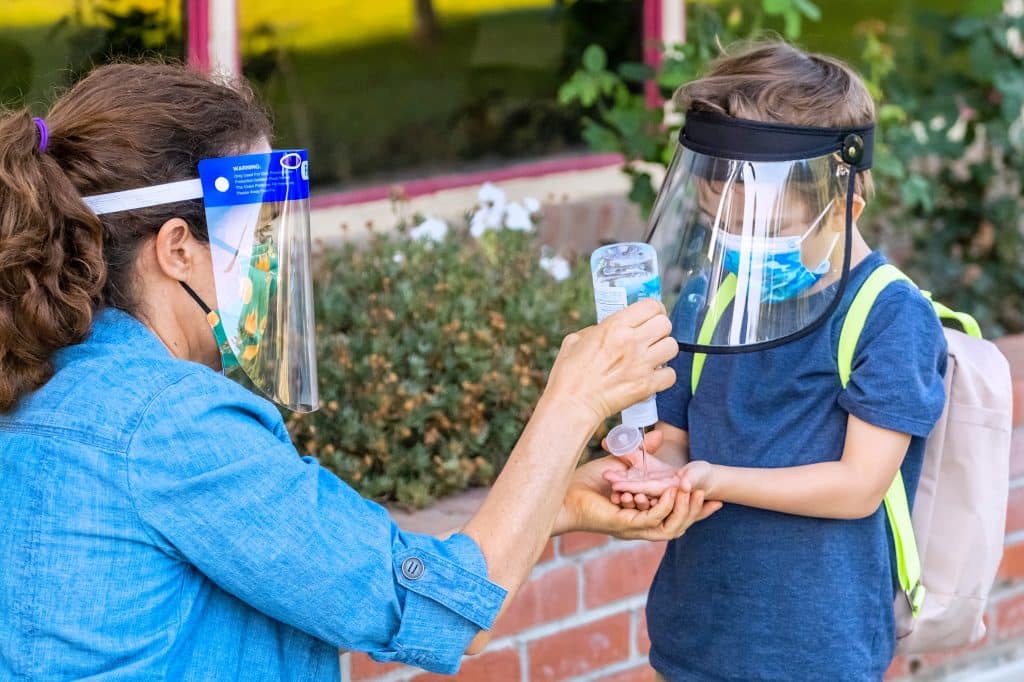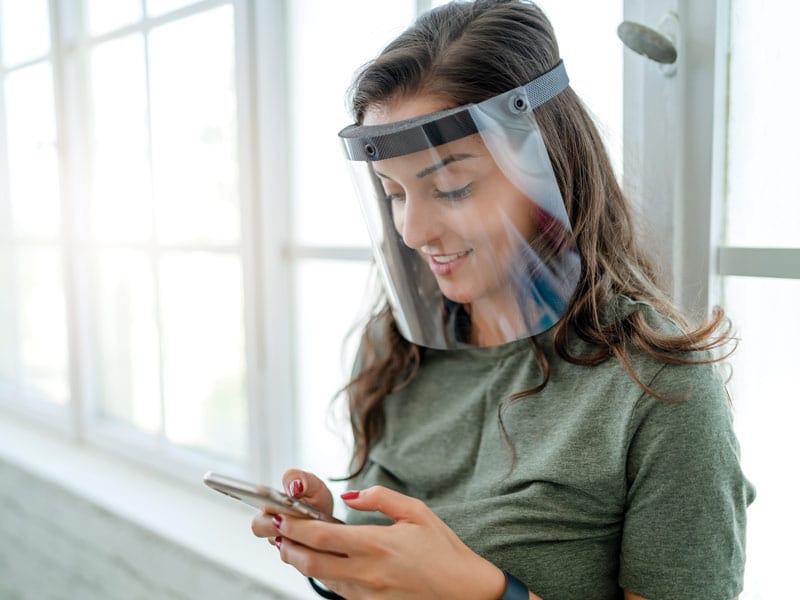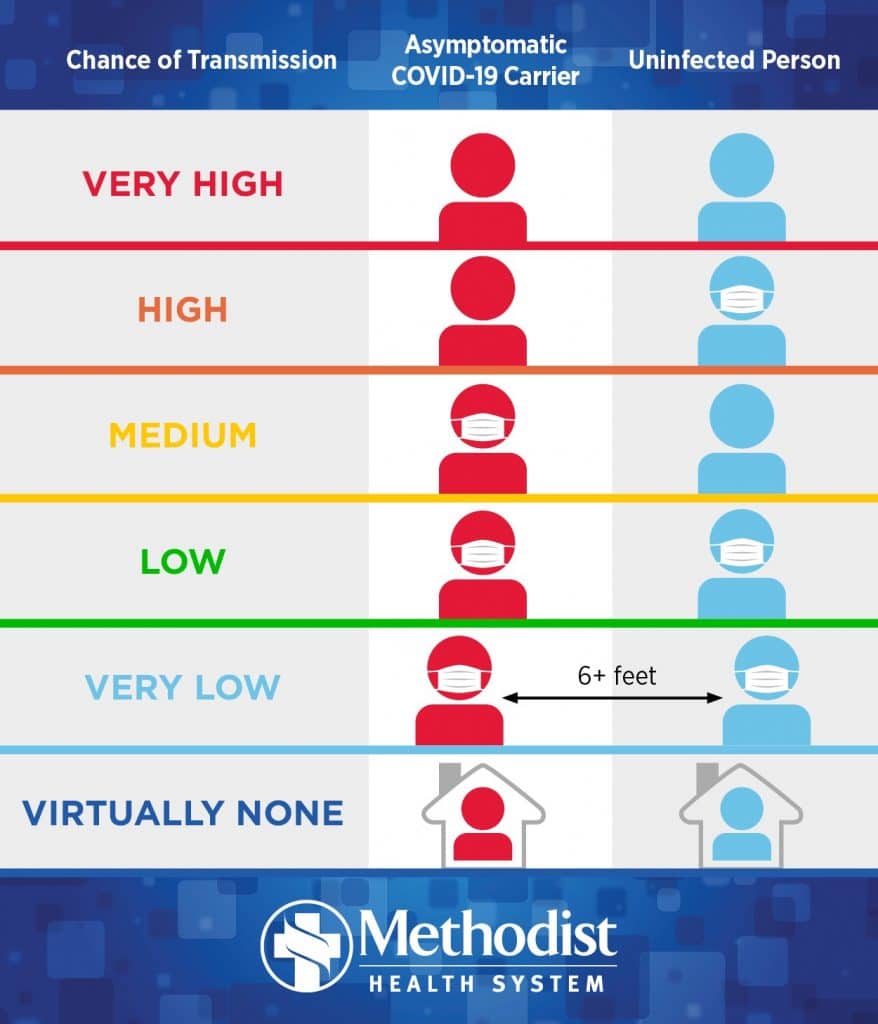Face masks are a must almost everywhere, and there’s ample evidence that masks are the best protection we have against COVID-19, aside from vaccination.
But what about face shields, those curved plastic or Plexiglass panels worn by so many healthcare providers? Odds are we’ve all seen fellow shoppers or a barista sporting a shield instead of a mask, and seemingly more comfortable for it.
Don’t be fooled, says epidemiologist Senait Woldai, MPH, CIC, LSSGB, manager of Infection Prevention and Control at Methodist Charlton Medical Center. Face shields are no substitute for a face mask, the “gold standard” when it comes to personal protection equipment.
“A face shield alone is not going to protect you from the coronavirus,” Woldai says. “A face shield without a mask would only protect you from splashes and sprays. You could still be exposed to droplets/aerosols that seep around the openings.”
 Pair a face shield with your mask for an extra layer of protection. It just doesn’t work without a mask.
Pair a face shield with your mask for an extra layer of protection. It just doesn’t work without a mask.
That said, face shields and protective eye wear are invaluable to doctors and nurses who treat infected patients on a daily basis, she says. But healthcare providers use them as an added layer of protection, usually with an N95 mask underneath.
“Face shields and goggles come more into play with medical professionals,” Woldai says. “That’s because they’re constantly around patients with COVID-19 and conduct aerosol-generating procedures where the risk shoots up really high.”
Aerosols are tiny particles — in this case, viral particles — that become suspended in the air as a fine mist. Watch this video for places where the virus has shown the potential to spread by airborne transmission.
There are also a host of medical treatments that can disperse the virus into the air, from chest compressions to intubation, when a ventilation tube is inserted into a patient who needs helps breathing.
The mist can linger in the air for hours, settling on surfaces and potentially infecting anyone who inhales the virus or — and here’s where face shields become important — gets it in their eyes.
“It’s an extra layer of protection,” Woldai says.
For the rest of us, face masks — coupled with social distancing and good hand hygiene — remain the best defense against the respiratory droplets that typically transmit COVID-19. And the latest guidance from the Centers for Disease Control and Prevention shows that masks are a good idea, even for the fully vaccinated.
A surgical mask, N95, or other fitted mask is ideal. Scarves and bandanas can serve in a pinch but don’t provide much protection. And here are some tips on how to get the most out of a face shield.
- Always wear a mask under the face shield. Without a mask, you’ll still be at risk of respiratory droplets or aerosols flowing around the sides.
- Keep the shield clean. Make sure you are cleaning and wiping it with each use, and start by wiping the inside first.
- Store it in a paper bag. Plastic bags retain moisture, which allows for microbial growth.
- Be sure the shield covers your entire face from top to bottom and side to side.
- Use proper hand hygiene before and after putting on and taking off your face shield.
- Discard a face shield if a strap is broken or if your vision is obscured due to scrapes or overuse of disinfectant.


